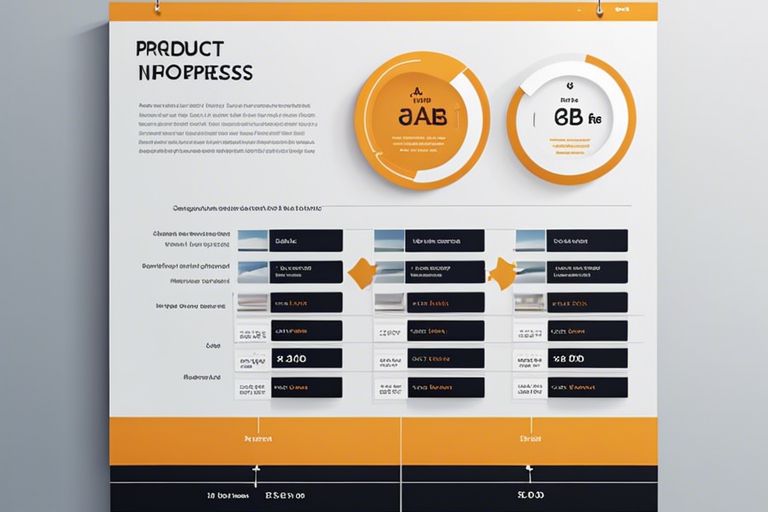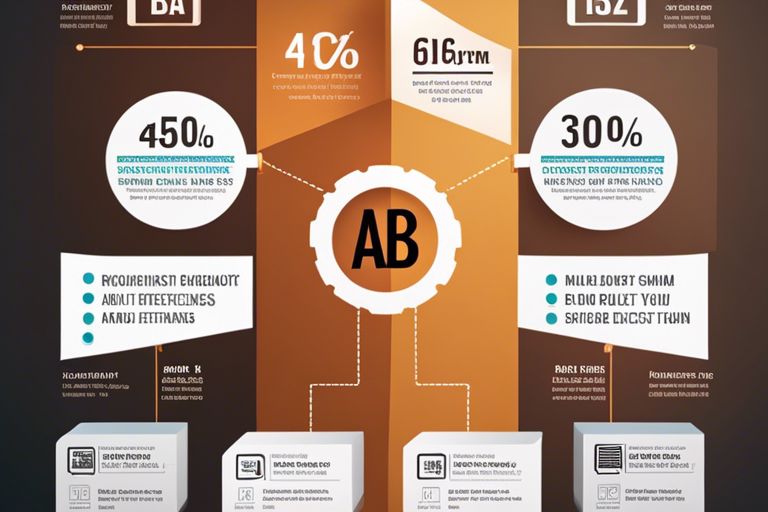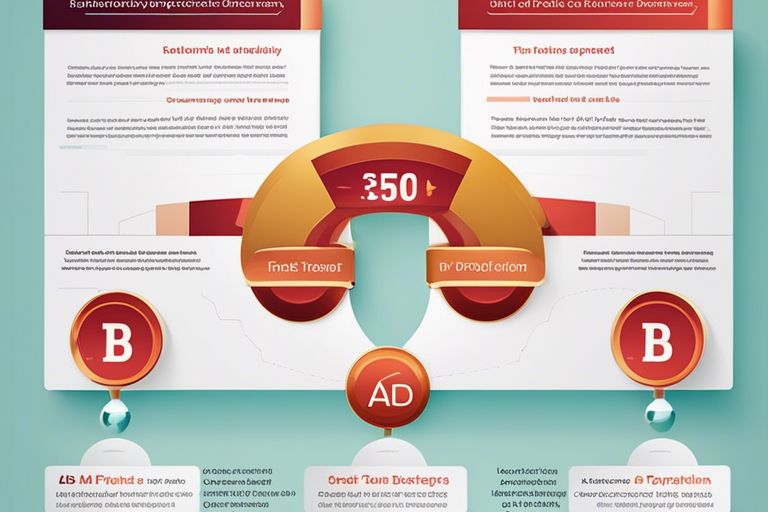Most successful businesses understand the importance of continually refining and improving their product descriptions to increase conversion rates and sales. A/B testing is a powerful tool that allows companies to compare and optimize different versions of their product descriptions to determine what resonates best with their target audience. In this blog post, we will explore effective strategies for implementing A/B testing and optimization techniques to maximize the impact of your product descriptions and drive better results.
Key Takeaways:
- Understand Your Audience: Prioritize knowing your target audience’s preferences, needs, and language to craft compelling product descriptions that resonate with them.
- Test Different Variations: Conduct A/B testing by altering elements such as tone, length, and format of product descriptions to determine which version drives more engagement and conversions.
- Track and Analyze Results: Use analytics and tracking tools to measure the performance of each product description variation, and iterate based on data-driven insights to continuously optimize and enhance effectiveness.

Understanding A/B Testing
A/B Testing is a crucial method used in digital marketing and product optimization. It involves comparing two versions of a webpage, advertisement, or product description to determine which one performs better. By strategically testing various elements, such as headlines, images, or copy, businesses can gather valuable insights on what resonates best with their audience.
The Fundamentals of A/B Testing
Any successful A/B test begins with a clear hypothesis. Define what specific aspect of your product description you want to test and what goal you aim to achieve. For example, you may want to test whether a short, punchy headline drives more conversions than a descriptive one. Once you have a hypothesis in place, create two variations – A and B – to test against each other. These variations should differ by only one element to isolate the impact of that particular change.
Benefits of A/B Testing for Product Descriptions
The beauty of A/B testing lies in its ability to provide concrete data on what works best for your audience. By analyzing the results of your tests, you can make informed decisions on how to refine your product descriptions for optimal performance. This approach eliminates guesswork and allows you to tailor your messaging based on real user preferences, ultimately leading to improved conversion rates and customer engagement.
The process of A/B testing empowers businesses to iterate and optimize their product descriptions continually. By systematically testing different variations, you can uncover valuable insights about your target audience’s preferences and behaviors. This data-driven approach enables you to make strategic adjustments that resonate better with customers, ultimately driving increased sales and conversions.

Preparing for A/B Testing
Some of the most crucial steps in A/B testing and optimization involve careful preparation before conducting experiments. This phase includes defining clear objectives and crafting variations of product descriptions to ensure effective testing and refinement.
Defining Clear Objectives
An essential aspect of preparing for A/B testing is defining clear objectives. Before running any experiments, it is necessary to establish specific goals and key performance indicators (KPIs) that will guide the testing process. Whether the aim is to increase conversion rates, improve click-through rates, or enhance user engagement, having well-defined objectives helps set benchmarks for success and ensures that the testing outcomes are aligned with the broader business goals.
Furthermore, outlining clear objectives aids in determining the metrics that will be tracked during the testing phase. By identifying the variables that need to be measured and the desired outcomes, businesses can effectively evaluate the impact of different product description variations and make data-driven decisions to optimize their content for maximum effectiveness.
Crafting Variations of Product Descriptions
Descriptions play a pivotal role in influencing consumer behavior and shaping perceptions of a product. When crafting variations of product descriptions for A/B testing, it is vital to consider factors such as language, tone, length, and formatting. By creating multiple versions that vary in these elements, businesses can test which attributes resonate most with their target audience and drive desired actions.
The process of crafting variations of product descriptions involves employing persuasive language, highlighting unique selling points, addressing customer pain points, and incorporating compelling calls-to-action. Through A/B testing different versions, companies can gain valuable insights into consumer preferences and behaviors, enabling them to optimize product descriptions for enhanced conversion rates and overall customer satisfaction.

Implementing A/B Testing
After strategizing and setting clear goals, the next step in A/B testing is the implementation phase. This critical stage involves creating variations of your product descriptions and testing them against each other to determine the most effective one. Implementing A/B testing requires careful planning, execution, and analysis to ensure accurate results and actionable insights.
Tools and Platforms for A/B Testing
Testing different versions of product descriptions can be efficiently done using various A/B testing tools and platforms. These tools, such as Google Optimize, Optimizely, or VWO, allow you to set up experiments, track user behavior, and analyze results in real-time. They provide a user-friendly interface for creating variations, defining metrics, and monitoring performance, making the A/B testing process more manageable and effective.
Analyzing A/B Testing Results
Testing the effectiveness of product descriptions through A/B testing generates valuable data that needs to be carefully analyzed to draw meaningful conclusions. Analyzing A/B testing results involves comparing key metrics such as conversion rates, bounce rates, and engagement levels between different variations. This analysis helps in understanding user preferences, identifying patterns, and making data-driven decisions to optimize product descriptions for maximum impact.
Implementing A/B testing is not just about running experiments, but it also involves interpreting and acting upon the results to enhance the effectiveness of your product descriptions. By delving into the insights gained from A/B testing, you can continually refine and tailor your product descriptions to meet the evolving needs and preferences of your target audience. Regularly analyzing A/B testing results is key to ensuring continuous improvement and optimal performance of your product descriptions.
Strategies for Optimization
Optimization Best Practices
Best practices for optimizing product descriptions involve a comprehensive approach that includes analyzing data, understanding user behavior, and implementing changes based on insights gained from testing. It is important to start by defining clear objectives and key performance indicators (KPIs) that will guide the optimization process. By setting specific goals, you can focus your efforts on areas that will have the most impact on improving the effectiveness of your product descriptions.
Testing different elements such as headlines, product features, call-to-action buttons, and visual imagery can provide valuable insights into what resonates best with your target audience. It is essential to use A/B testing to compare variations and determine which elements drive better engagement and conversions. Continuously monitoring and analyzing the results will help you refine and fine-tune your product descriptions to maximize their effectiveness.
Iterative Testing and Continuous Improvement
An iterative testing approach involves making incremental changes to product descriptions based on data-driven insights and feedback. By testing small variations and measuring their impact, you can gradually improve the performance of your product descriptions over time. Continuous testing allows you to identify trends and patterns that can inform future optimization strategies.
Continuous improvement is a key component of successful optimization efforts. By regularly testing and refining product descriptions, you can stay ahead of market trends and consumer preferences. Constantly seeking ways to enhance the clarity, persuasion, and relevance of your product descriptions will lead to better user experiences and ultimately drive higher conversions.
Final Words
From above, it is evident that A/B testing and optimization are powerful strategies for testing and refining product descriptions to maximize effectiveness. By systematically testing different variations and analyzing the results, businesses can make data-driven decisions to enhance their product descriptions and ultimately increase customer engagement and conversions. With a commitment to continuous testing and improvement, companies can stay ahead of the competition and ensure that their product descriptions are always optimized for maximum impact. A thoughtful approach to A/B testing can lead to significant improvements in sales and overall performance, making it a crucial tool for any business looking to maximize the effectiveness of their product descriptions.
FAQ
Q: What is A/B testing?
A: A/B testing, also known as split testing, is a method used to compare two versions of a webpage or product description to determine which one performs better in terms of user engagement or conversion rates.
Q: Why is A/B testing important for optimizing product descriptions?
A: A/B testing allows you to scientifically test different variations of product descriptions to identify which elements resonate best with your target audience and drive more conversions.
Q: What are some key strategies for A/B testing product descriptions?
A: Some key strategies for A/B testing product descriptions include testing one element at a time, setting clear goals for each test, ensuring your sample size is statistically significant, and analyzing results accurately.
Q: How can A/B testing help maximize the effectiveness of product descriptions?
A: A/B testing helps you understand what elements of a product description drive the most engagement and conversions, allowing you to refine and optimize them for maximum effectiveness.
Q: What are some common mistakes to avoid when conducting A/B tests on product descriptions?
A: Common mistakes to avoid when conducting A/B tests on product descriptions include making changes based on personal preferences rather than data, not running tests for a long enough duration, and failing to track and analyze results properly.

